
views
Meeting Your Plant's Light and Moisture Requirements
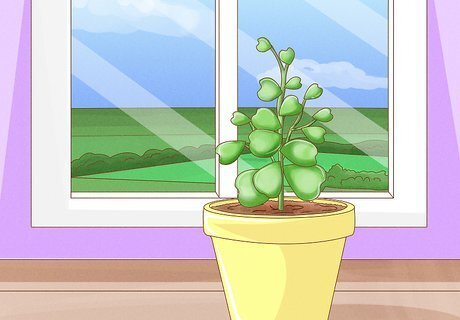
Place your Hoya near a window. Sufficient natural light is one of the most important contributing factors when trying to get a Hoya to bloom. The ideal location indoors is right in front of a window facing east or west where it is exposed to two to four hours of direct sunlight. Your plant should also be exposed to bright, indirect light during the rest of the day.
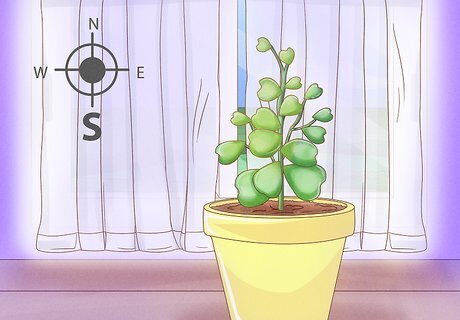
Hang sheer curtains if you place your plant in front of a south-facing window. It can also be placed in front of a window that faces south, as long as there is a sheer curtain between the plant and the window to help diffuse the hot, direct sunlight. When the plant is left in a south window all day without a sheer curtain for shade, the leaves will scorch, becoming very pale or tan.

Give your plant additional sunlight to help it bloom. If the Hoya plant is over three years old and is still not blooming, try giving it one or two more hours of direct sunlight each day. Other signs that the Hoya is not getting enough light are new leaves that are small and pale green, long sections of bare stem, slow growth and dead mature leaves.

Let the potting soil dry out almost all the way before watering a Hoya plant during the spring, summer and fall. Use water that has been left sitting in an open container for 24 hours or more. Leaving the water to sit allows the chlorine and fluorine, chemicals found in tap water that can harm a Hoya plant, to dissipate into the air naturally. The water will also be at room temperature which is better for Hoyas. Fresh tap water is very cold and could stress these tropical plants.
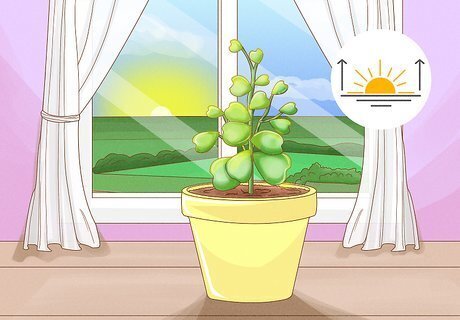
Water Hoyas in the morning. This allows the plant to retain its moisture during the day. Distribute the water over the potting soil evenly until it begins to drain out of the drain holes in the bottom of the container.
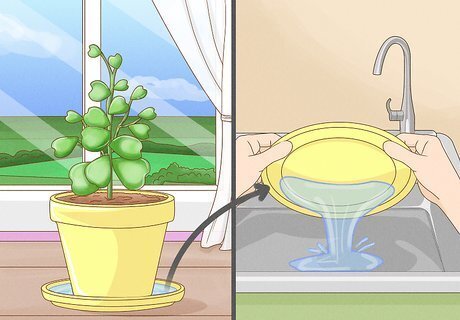
Dump the excess water out of the saucer beneath the container. If left in the saucer, the excess water could wick up into the container and keep the soil too wet. Wet soil deprives the Hoya roots of oxygen and encourages root rot.
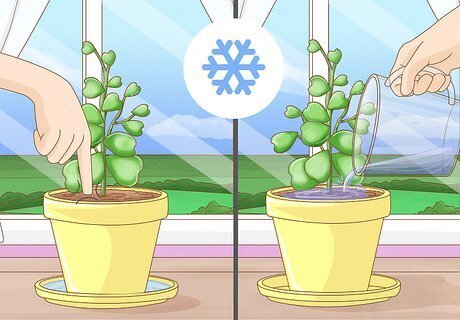
Let the potting mix dry completely before watering your plant in the winter to encourage the Hoya to have a rest period. A winter rest period helps Hoyas bloom the following spring or summer.
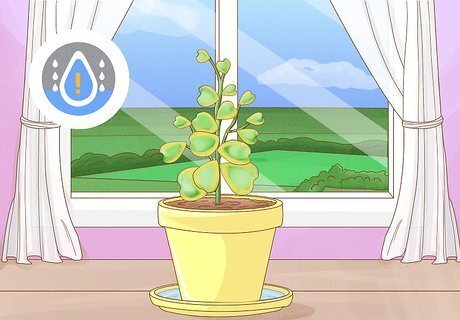
Recognize signs that your plant is being watered too much, or has rotted. Hoya plant leaves will turn yellow and drop if it is being watered too much. Water it less often. If the leaves continue to turn yellow and drop, turn the container on its side and gently slide the Hoya out of the container. Shake the potting soil off the roots to get a good look at them. If they have black tips or the whole root is black or brown and mushy, the Hoya has root rot. If most of the roots are rotten, the plant should be thrown away. If only a few are bad, repot it using peat-based potting soil that contains perlite or vermiculite for improved drainage. Be sure to use a container with drain holes. Water it immediately but then let the soil become completely dry before watering again. If the plant shrivels, it is not being watered often enough. Water it more often.
Meeting Your Plant's Nutrient Requirements
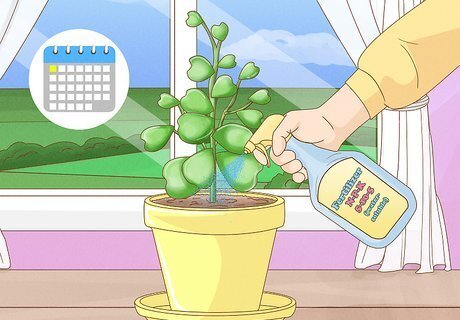
Give the Hoya plant 5-10-5 water-soluble houseplant fertilizer once a month in the spring, summer and fall. Getting the right fertilizer ratio, 5-10-5, is important when trying to get the Hoya to bloom. The number in the middle (10) is phosphorus which promotes flowering. It should be higher than the first number (5) which is nitrogen because nitrogen causes stem and leaf growth. The third number (5) is potassium which supports light absorption. It should be about equal to the first number.
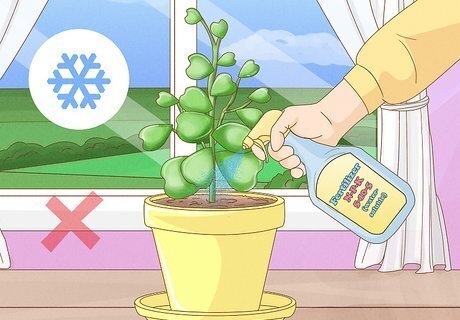
Do not give your plant fertilizer in the winter while it is resting. Begin fertilizing again in the spring to give it the nutrients it needs to grow and bloom.

Dilute your fertilizer. The usual dilution rate is 1 teaspoon in a gallon of water but it may be slightly different, depending on the fertilizer you choose. Check the label on the bottle and follow the manufacturer's recommendations.

Look for signs that your plant is getting too much, or not enough, fertilizer. Pale leaves and stems and a slow growth rate are indications that the Hoya is not getting enough fertilizer. If that occurs, increase the frequency to twice a month. When the Hoya is getting fertilizer too often, the new leaves are darker green and smaller and the stem length between the leaves becomes shorter. Reduce the frequency to every five to six weeks if that happens.

Give the diluted fertilizer to the Hoya right after watering. Giving fertilizer to a dry Hoya could damage its roots.
Knowing When to Repot
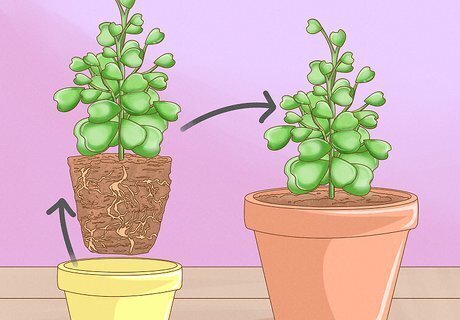
Do not repot the Hoya until the container is full of roots. There should be very little soil left. When it does need to be repotted, move it into a container that is no more than 1 inch larger than the old one.

Repot your plant with peat-based potting soil. Put 1 inch of potting soil into the new container, gently remove the Hoya from its old container and set it in the new one. Fill in around the roots with potting soil and water it generously to settle the soil and give it a good drink.

Leave the flower stem on the Hoya after the blooms fade. It will bloom again on that same stem. The faded flowers can be snipped off with sharp scissors just below the flower.
Fighting Off Pests

Watch out for mealybugs and scale insects. Hoyas are occasionally bothered by mealybugs and scale insects. They are small, flat, oval, immobile insects and are commonly white, tan or brown.
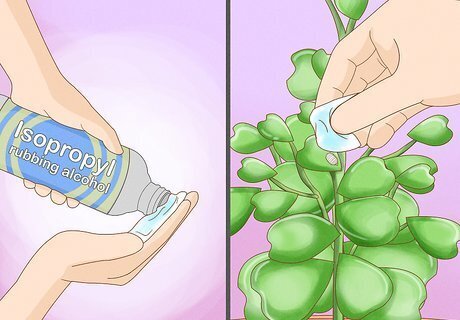
Rid your plant of mealybugs and scale insects. If they do attack, rub them off with your thumbnail or dip a cotton ball in Isopropyl rubbing alcohol and wipe them off the plant with that. Check beneath the leaves and along the stems.

Keep a lookout for aphids. Aphids may also try to make a meal out of a Hoya. They are small, oval, soft-bodied insects that are most often green or red, although they can be nearly any color. If they attack, set the Hoya in the sink or tub and wash the aphids off with a strong spray of water.














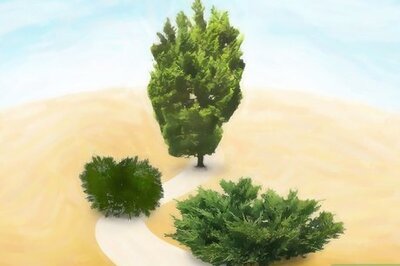

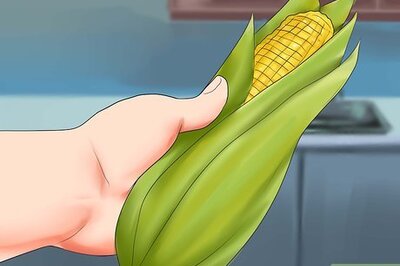



Comments
0 comment